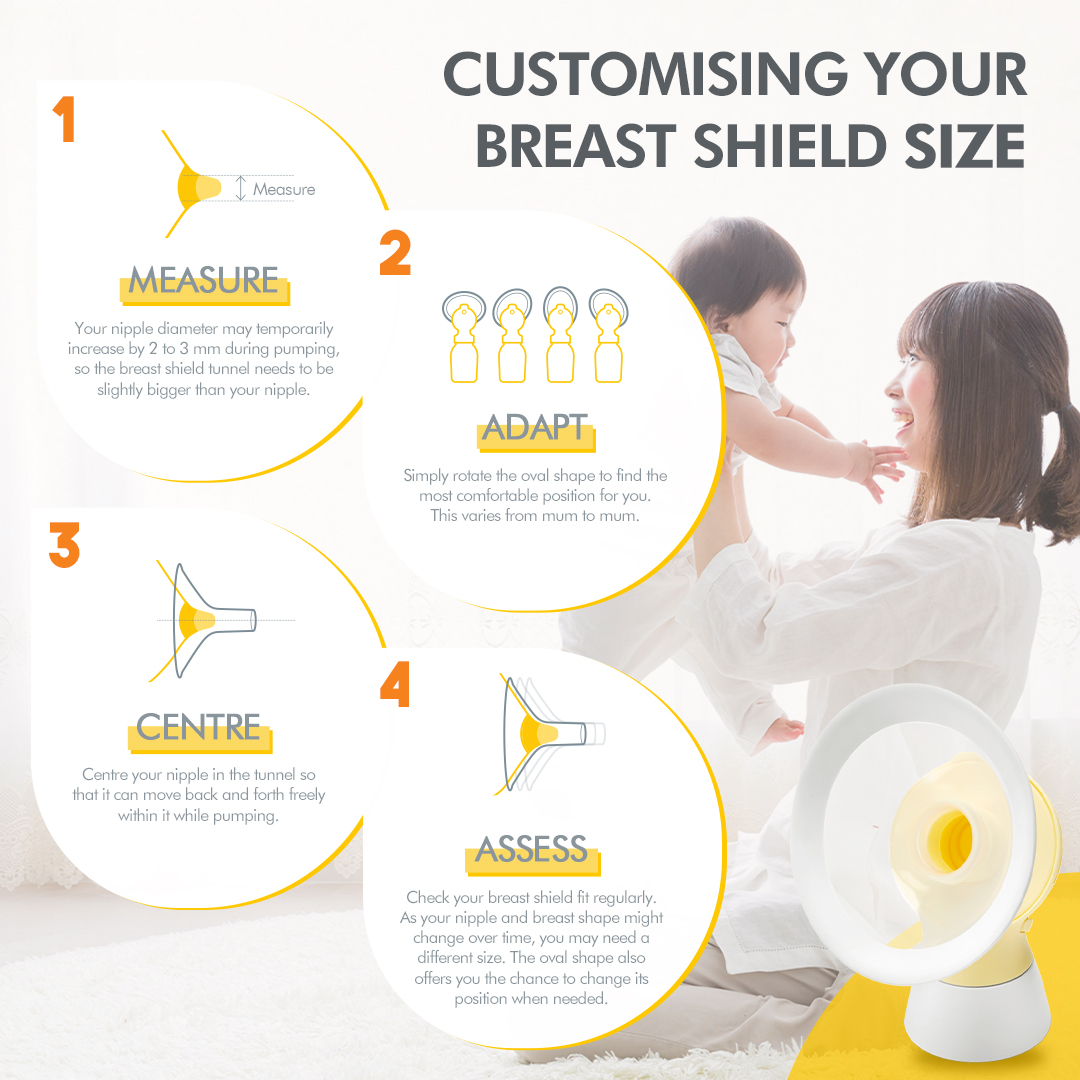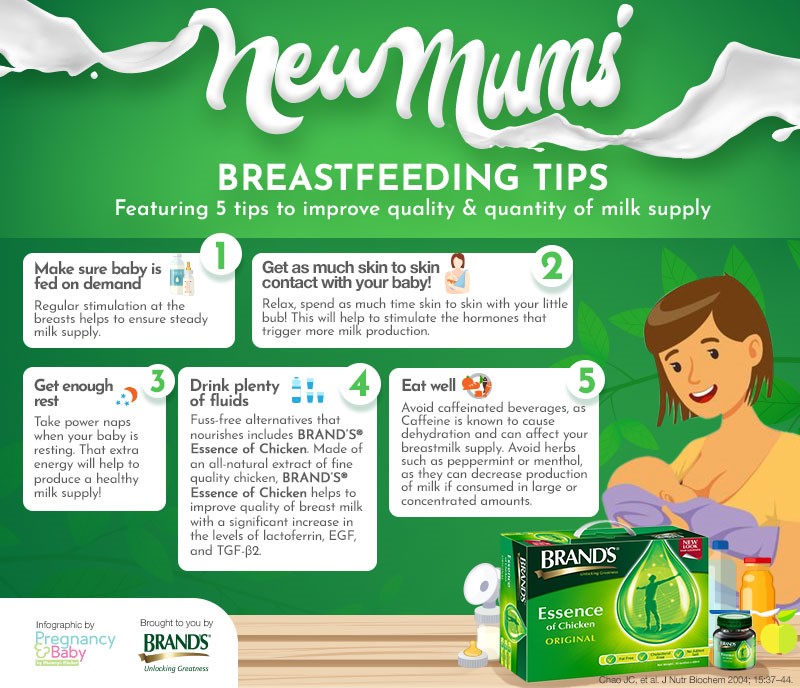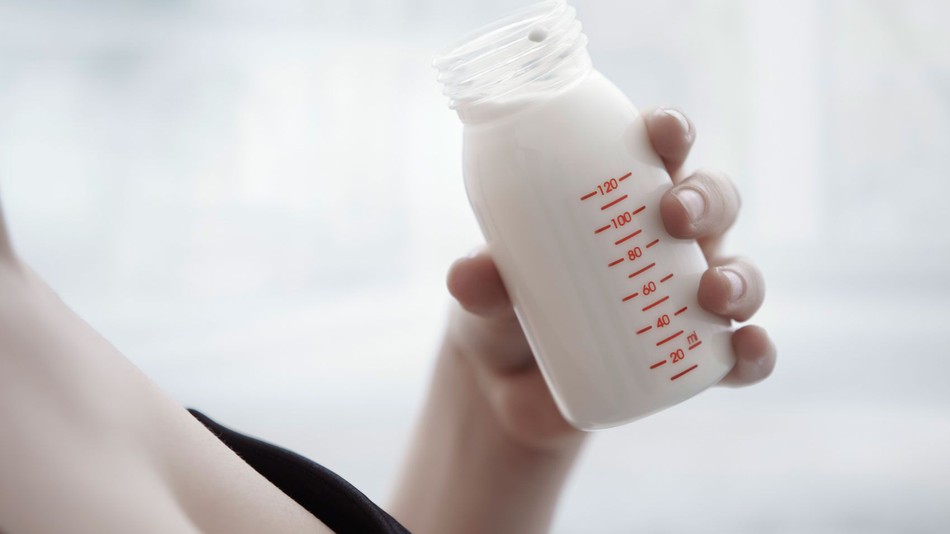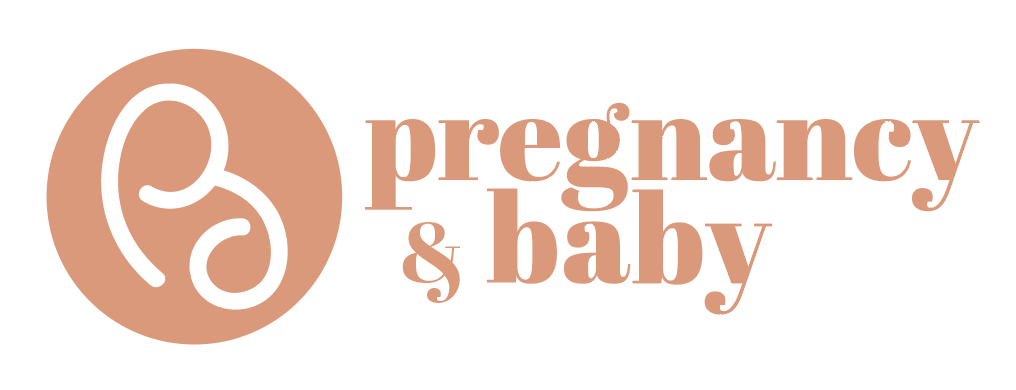
Breast pumping shouldn’t hurt! 5 ways to remedy the most common pumping problems.
#1: Blocked Ducts
A common concern for breastfeeding mothers are blocked ducts - a sore lump that appears in your breast that is painful to the touch. This occurs when milk is not fully drained and gets clogged, due to pressure from a tight nursing bra or even from using a breast pump that is not powerful enough to empty the breast. Frequent feeding or pumping is often the best way to clear blocked ducts. Incorporate these simple remedies to unclog blocked ducts quickly.
Before breastfeeding
To open up the ducts, apply a warm towel to the affected breast or take a warm shower while massaging the sore area gently and working your way toward the nipple.
During breastfeeding
Start with the affected breast first, as your baby will suck the strongest in the beginning and the pressure may dislodge the clog.
After breastfeeding
Place a chilled cabbage leaf or cold towel over your breasts to relieve any soreness or pain.
To prevent blocked ducts, use a breast pump to drain the breast completely if your baby finishes feeding before your breast is empty.
#2: Anxiety when pumping
Pumping anxiety induces brief moments of negativity and most mothers describe this as a sudden feeling of sadness that lasts for a few minutes. This form of anxiety, also known as Dysphoric Milk Ejection Reflex (D-MER), is triggered when dopamine levels dip due to milk ejection while breastfeeding.
By understanding that it is a hormonal reflex that is very common among nursing mothers, you won’t feel so alone and afraid when it occurs. To cope with the sudden dip in dopamine levels, mothers can include more chocolates in their diet or include relaxation exercises in their day to spike their dopamine levels. The good news is that pumping anxiety will eventually pass at the 3-month mark.
#3: Soreness & Dryness
Breastfeeding & pumping is tough on your nipples, often causing sore and dry nipples initially. Once your body gets used to it, the soreness will fade away. To alleviate dryness, soothe your nipples with a few drops of your breast milk after nursing or pumping. It also helps to turn down the suction during your first few pumps until your nipples have time to adjust, before gradually increasing the suction power.
#4: Exhaustion
When you are starting on your breastfeeding journey, your body uses a lot of energy to produce breast milk, and it is perfectly natural to feel exhausted. However, when exhaustion is not managed properly, it may reduce breast milk supply. Here’s how you can prevent exhaustion and fatigue right from the start.
Power Nap
Taking these 20-minute power naps during the day works wonders for your energy level and mood. The best time to nap is when your baby is napping. Don’t be stressed if you don’t drift off to sleep, as the 20 minutes of relaxation will still leave you feeling refreshed and alert.
Get Comfortable
Being relaxed and comfortable while pumping will help your milk flow. Stress and discomfort can hinder your milk-producing hormones and affect milk supply. Create a relaxing pumping environment with sufficient back support, play some calming music and consider hands-free pumping to free up more time for yourself.
Eat Right
Your body requires 500 calories a day to exclusively breastfeed a baby. While it can be tempting to diet to lose your pregnancy weight, make sure that you are sufficiently nourished to keep your energy level up. Try including these superfoods in your diet:
#5: Finding the Right Breast Pump
When you’re ready to start pumping breast milk, finding the right pump can make or break your breastfeeding journey. Consider the following factors when choosing the right breast pump:
Working mom vs Stay-home mom
If you’re going to be working full-time, consider investing in an electric breast pump that can save precious time. Some breast pumps like Medela Maxi Swing Flex Pump allows for hands-free pumping to free up more time for yourself.
For stay-home moms with the occasional need to drain milk, a battery-operated or manual pump would suffice. While these are cheaper than the electric pumps, they take twice as long to drain the breasts.
Single vs Double Pumping
For mothers who are always on the go, it is worth investing in a double breast pump to save time and get more milk – yes, that’s an extra bottle after a few pumping sessions. Apart from cutting down your pumping time by half, double pumping boosts the prolactin hormone which stimulates milk production and results in 18% more milk supply as compared to single pumping.
Investing in a double breast pump also frees up your hands for a few minutes, giving you pockets of free time during the day, making your pumping sessions more efficient and comfortable than before.
Well-fitted breast shields
When choosing a breast pump, it is important to get the perfect fit for your breast shield. A poor fit may result in soreness and nipple damage from chafing over time. Loose breast shields may not drain out your breast milk completely, leaving your breasts feeling full and may even lead to painful blocked ducts.
Here is a quick guide to choosing the right fit:
Using the well-fitted breast shield goes a long way in maximising comfort and efficiency during your breastfeeding journey. Medela’s Personal FlexTM breast shields are available in 5 sizes to accommodate changing breast shape or uneven breast size.
For busy mums who want to spend less time pumping, the Medela Swing Flex Pump is capable of double pumping more milk at half the time, offering convenience and more time on your hands. Each breast pump is equipped with Personal FlexTM breast shields that is customised for maximum comfort and designed to adapt to changing breast shape. Medela’s patented 2-Phase ExpressionTM technology mimics babies’ sucking for a more natural pumping experience and switches automatically from stimulation to expression phase for optimal milk flow.

New Mum's Breastfeeding Tips - Featuring 5 tips to improve quality & quantity of milk supply!
We know that breast milk is the best milk for babies! Fretting over how to tackle your milk supply?
Relax and read on about our tips to improve quality & quantity of milk supply!


For Muslims worldwide, Ramadan is the month of fasting and prayer – food, drink, physical needs are all abstained from during the day.
However, for Muslim mums who are breastfeeding, they may be exempt from fasting if they feel that their health, or the health of baby will be affected by the fasting. They may be expected to compensate for the missed fasting period by fasting at a later date – please do check with a scholar or a book of Fiqh to confirm the appropriate guidelines.
Here is a Q&A for a Ruling on fasting for pregnant women and breastfeeding mothers on the IslamQA website.
Your decision may be guided by the age of baby, as a baby who is younger than six months old and is exclusively breastfed has different needs from a year old baby that has a diet of breastmilk and other foods.
Fasting during breastfeeding, will it harm my baby?
You’ll be able to keep making breastmilk even while you’re still fasting, so baby will be all right! Reducing how much calories you’re intaking during Ramadan should make no difference to the amount of milk you make.
The amazing thing about breastfeeding mums is that your body adapts to the way it burns calories. It makes up for the lack of food or fluid by becoming better at releasing energy and stepping up milk production.
You could also eat absolutely nothing for a whole day (24 hours) without affecting the quantity or nutritional value of your breastmilk too. However, if you start to feel the effects of fasting on your body, you should break the fast for your own health.
How will baby be affected by the changes in my milk?
Baby is quite unlikely to be affected by the changes, as studies have shown that neither the weight nor the growth rate of breastfed babies appears to be affected by mummies during Ramadan.
Your breastmilk has already undergone changes due to your diet, as well as the frequency and amount baby feeds! If you’re losing weight due to eating lesser, the type of fat in your breastmilk might change, but not the amount of fat.
It’s very normal for the types of fat in breastmilk to differ from mum to mum, and even in the same mum over time. If you’re not getting enough fat in your diet, no worries about that as your body will grab those fats from your fat stores instead.
Continue reading on the next page...
How does breastfeeding while fasting affect me?
As mentioned before, our bodies are able to adapt to fasting. But if you’ve been breastfeeding for a while, you’ll understand how dry your mouth feels, and thirst will definitely take over.
Dehydration becomes a problem and could even make you feel sick. Here are some signs of dehydration:
If you notice any of these signs, you should break your fast with some water that has salt and sugar added to it. If after 30 minutes you’re still not feeling well, visit a doctor!
How can I take care of myself during fasting?
Being prepared for the fast will definitely help you to cope with it better. It’s as simple as:
After you’ve broken your fast, make sure to drink a lot of water, especially in the early morning! Eat proper meals and stay hydrated – it’s important to get the right nutrients and calories from food. Set your alarm clock to make sure you eat your pre-dawn meal!
A study showed that the levels of some nutrients in breastmilk went down if breastfeeding mums fasted during Ramadan, so it’s important to eat well after breaking your fast.
You may also find it difficult to eat enough food overnight, and may begin to lose weight, but a loss of between 0.kg and 1kg per week is unlikely to negatively affect your health or milk supply.
Remember to always approach your doctor if you ever feel unwell. Check with your family and friends who have also done breastfeeding during fasting, for both moral support as well as learning from what they did before.
Pregnancy and Baby Singapore provides you with the latest news and practical tips to help you in your parenting journey. For more tips on your pregnancy and baby in Singapore, subscribe to our mailing list and like us on Facebook, to receive new articles for mummies like you every week!

The first two weeks of breastfeeding may go very smoothly, or they may be completely overwhelming. It's a time when you're learning and adjusting to parenthood. It's also a very important time for breastfeeding. Getting breastfeeding off to a good start and building a healthy supply of breast milk during these early weeks, can determine how successful breastfeeding will be for you and your child.
Once you leave the hospital and begin to settle in at home with your new baby, everything from breastfeeding to sleeping will hopefully start to find a sense of rhythm. Getting out of the house may be a bit of a challenge, but at least, that'll give you time to learn more about your baby from his little signs of hunger to what his different cries mean.
What can you expect?
Your newborn should be waking up every 2 to 3 hours to breastfeed, with the feedings lasting anywhere from 15 minutes to almost an hour. Sleep patterns will vary, but many babies -- when frequently breastfed throughout the day -- give their parents a good 4 to 5 hours of sleep at night.
By the end of the first two weeks, your baby should be back to his birth weight or he may even weigh a little more.
Common breastfeeding issues you may face
You will be tired
You may feel fatigued from sleep deprivation, yet you're beginning to feel that your body is recovering from delivery.
At this point, it's very important not to neglect yourself and to take measures to take care of yourself. Rest whenever you can and ask your partner, family members, or friends for help.
Sore nipples
Your nipples may be a little a tender, especially when the baby first latches on, but by the end of two weeks, you should not feel constant pain throughout a feeding.
If your nipples are extremely sore, painful, cracked, or bleeding, it's most likely due to an incorrect latch. Ask your doctor or a lactation consultant to check your baby's latch and help you correct it.
Breast engorgement
Breast engorgement is one of the common breastfeeding problems that you'll likely experience during the first two weeks. As the production of breast milk increases and your milk changes from colostrum to transitional breast milk to mature breast milk, it can cause breast swelling and pain. Be sure not to disregard this discomfort and manage it promptly.
During these first few weeks, your body is building a healthy supply of breast milk. If you feel that your milk is supply is low, it could be that your baby is not latching on well, or you're not breastfeeding your baby often enough or long enough at each feeding. However, some health issues can cause a true low milk supply, so talk to your doctor about your concerns and take your baby to her health care provider to be sure she's getting enough breast milk and gaining weight.
Continue reading on the next page...
Common breastfeeding issues your baby may face
Feeding too often
One of the most common complaints from new mothers during the first two weeks of breastfeeding is that the baby is breastfeeding too often.
But, it's natural, and that's what your baby is supposed to do. He needs to breastfeed frequently during the first few weeks to get enough breast milk and tell your body to make more breast milk to build a healthy supply. But, as the days go on, if your newborn never seems satisfied, breastfeeds for very long periods of time, and has less than six wet diapers a day, call the doctor right away. These are signs that your baby is not getting enough breast milk.
Poor or incorrect latch
When a baby latches on to just the nipple, he won't be able to get enough breast milk. He will not be satisfied after feedings and he won't gain enough weight.
A poor latch is also a main cause of sore nipples and a low breast milk supply. Learn how to latch your baby on properly either by taking a breastfeeding class or reading up on the subject before you have your baby, or from your nurse, doctor, or lactation consultant while you're in the hospital. Each time you latch your baby on, look for the signs of a good latch. If your baby isn't latched on well, gently remove him from your breast and try again.
Dealing with a sleepy baby
During the first week, your baby may sleep a lot. If she's not waking up every 2 to 3 hours, you should wake her up for feedings. Breastfeeding a sleepy baby isn't always easy, but you can try waking her up by taking her out of her swaddle, tickling her feet, or changing her diaper. Once you get her latched on, try to keep her breastfeeding by stroking her cheek or burping her.
By the end of the first two weeks, if your child is gaining weight, wetting at least 6 to 8 diapers a day, having regular bowel movements, and there's no evidence of jaundice, you can let her sleep for one longer stretch of about 5 hours each day.
Continue reading on the next page...
Establishing a healthy milk supply
The first few weeks are the most important for building up a healthy supply of breast milk. It's a time when your breast milk changes and comes in. It's also the time when your baby stimulates your body to continue making breast milk. By putting your baby to the breast very often (at least every 2 to 3 hours), you're telling your body to make more breast milk and setting the foundation for your milk supply.
By the end of two weeks, your mature breast milk should be in. There may actually be times where you feel you can't hold out until the next feeding because you're so full. This is a very normal feeling and, as time goes on, your milk supply will adjust to your baby's needs. And, although it may seem hard to believe, your breasts and your body will adjust to all of these new fluids.
Tips for the first two weeks of breastfeeding
Article was adapted from Very Well Family
Pregnancy and Baby Singapore provides you with the latest news and practical tips to help you in your parenting journey. For more tips on your pregnancy and baby in Singapore, subscribe to our mailing list and like us on Facebook, to receive new articles for mummies like you every week!

A babies’ diet directly affects the content of the poop. When a child is being breastfed, their poop becomes soft and lighter in colour. Babies may pass the stool after every feed (or four times a day on average), or they may even pass a stool twice or thrice per week, but it should not be a problem as long as their poop is soft and the colour is consistent.
What are the common problems parents face?
Not pooping for days
If the babies are not pooping regularly or as frequently as they always do, it is not always something to worry about. This is because the breast feed of babies is so enriched with nutrition that there is hardly any waste.
What the parents should look for is a change in mood, sleeping habits, eating habits and any physical changes in the baby. Sometimes the baby will have a stiff stomach, shows signs of discomfort when passing stool which all indicate a bowel movement problem. In such case doctor should be consulted immediately.
Diarrhea or watery poop
The parents should notice if the baby has very runny stool, this would indicate diarrhea. In such case the baby will get a dirty diaper more frequently. It will be very leaky and will spurt out suddenly.
There are several reasons why a baby may have diarrhea. Gastro-intestinal infection, excessive liquid diet, allergy to certain food and medication reaction is the most common causes of diarrhea. If this condition persists over a day immediate medical care should be sought, since the chances of dehydration increase.
Constipation
If the baby has difficulty in passing motion or his face turns bright red it could be an indication of constipation. When a child has constipation they usually display signs such as irritation or crying while passing motion. Sometimes a little blood is also observable because of skin rupture.
Breastfed babies are not often constipated because of colostrum in breast milk, which acts as a mild laxative, but babies who are being fed from a bottle may suffer from constipation, because of excessive solid or less water. Also sometimes the child may be dehydrated for a long time resulting in hard stools. Fever and medication may also cause constipation.
Green poop
Green coloured poop can indicate too much lactose intake, lactose is a part of breast milk, and hence over-feeding is indicated here.
If the baby is getting proper feed and still has green coloured poop, it can indicate a medication reaction, food allergy or a stomach bug. If the colour of poop does not change after 24 hours, a paediatrician should be visited.
Very yellow or pale poop
Pale or yellow poo is common in babies that are having active jaundice. Other signs of jaundice in new born babies include yellowish tint of skin, yellowing of sclera (visible portion of eye) and more frequent pooping. Physiological pooping is seen in new born babies and resolves spontaneously within a few days without treatment; however, if your baby is having issues even after 2 weeks, speak to a paediatrician.
Blood stained poop
Blood stained poo is indicative of constipation, this happens when the skin around the babies anus ruptures (anal fissure) due to excessive pressure being applied to pass out the poo. However, such a stool should be checked out by the doctor to rule out any other disease.
Pregnancy and Baby Singapore provides you with the latest news and practical tips to help you in your parenting journey. For more tips on your pregnancy and baby in Singapore, subscribe to our mailing list and like us on Facebook, to receive new articles for mummies like you every week!

Do you have one super producer breast while the other is barely yielding an ounce? You are not alone! Lopsided breast is a common situation. No formula can ever compare to your breast milk, it is simply the best for baby. But in order for us parents to give out the best for our child, we must also be in our best health and form.
Uneven breast milk supply is a common struggle of mothers. To balance out feeding especially if one breast produces more milk than the other is difficult. The baby usually favours a side over the other due to a lot of factors. It is commonplace yet is there a remedy for this one?
Rectify it ASAP
When you encounter lopsided breasts and uneven milk supply, make a point to correct it immediately. When you allow for some time to have one breast produce more milk than the other, it can eventually lead to premature weaning. Your other breast can gradually reduce what it produces and then dry up, which will cut your milk supply in half.
A baby grows fast and having just one breast to supply his needs will make him hungry!
Why do you get a ‘lazy boob’?
Although all breasts are created unequal and not so symmetrical, asymmetrical breasts can be unsightly. It is uncomfortable if another side can get engorged and heavy while the other one is limp and light. With breastfeeding as with other concerns involving a baby, patience is the key.
Even if a baby has consistently favoured a breast over the other for weeks, there is still hope that the idle breasts can be revived. The factors that contribute to unequal breast milk supply are mostly due to:
Continue reading on the next page...
How to balance out uneven milk supply?
Start on your lazy boob
One of the best ways to even out supply when one breast produces more milk is to start with the smaller or weaker breast. If the baby is picky, initially give your smaller breasts during those times when he is sleepy and hungry, such as on his night time feeding sessions.
You will be surprised on how much your baby can suck out of a small breast when hungry. It will also be better at first if he is sleepy so that he will hardly tell the difference. He will most likely empty out the weaker boob this way. The voracious sucking will likewise help that side to awaken lazy mammary glands and produce more milk later on.
Warm it
Warmth stimulates milk production. Put on a warm towel or wrap all around your weaker boob and let it there for a few minutes. You will feel a tingling sensation similar to quick engorgement when done right. One the first try, it might not be effective but it can also add just a little more milk supply after a few tries.
Add on a pump session after feeding
If baby plays favourites with your boobies, continue to stimulate the least favoured side through regular manual pumping. The dominant breast can produce way more than twice as compared to the limp one but with through pumping, it can get even. It is better to pump immediately after eating and having a warm bath.
Do not forget the other boob!
You might have paid a lot of attention to the weaker breast just to revive it but do not forget the other! This is baby’s favourite side so offer this to him once he is done emptying the smaller breast.
If he is already full (which can rarely happen if the other breast is still weaker), then pump out some. You want to balance both sides or else, the baby will again favour just one side.
Drink more water
Have a large glass with you during feeding. Sip water while feeding the baby, especially when he is latched on the smaller breast. Before you pump, make sure to drink more water, you will need it to allow your milk to flow faster.
If you had just given birth a few days ago, drinking water will also help you to have more milk and to ease the difficulties brought about by water retention.
Pregnancy and Baby Singapore provides you with the latest news and practical tips to help you in your parenting journey. For more tips on your pregnancy and baby in Singapore, subscribe to our mailing list and like us on Facebook, to receive new articles for mummies like you every week!

Breastfeeding baby is quite possibly one of the most intimate and nutritious things that you can do for them – it helps to create stronger bonds between baby and you. Breastfeeding may not be as easy as many mums make it out to be; in fact, it may be a lot harder than you initially expect, but don’t worry, it’s normal for mums to have trouble with breastfeeding baby!
We’ve gathered some helpful advice and information to improve your breastfeeding experience, so keep on reading!
1. Breastfeeding Isn’t Free
Contrary to popular belief, breastfeeding isn’t free, but it can be cheaper than relying on formula in the long run. Here are some breastfeeding costs that add up – not all are considered necessities, but they do make breastfeeding life easier:
2. Newborns Nurse a Lot
It’s completely normal for newborns to be hungry all the time. Breastmilk is perfect for babies and can be digested really fast by them. An additional benefit of nursing so often is that the more you breastfeed, the more breastmilk you’ll produce! Isn’t it interesting how our bodies are able to quickly react to the needs of baby?
Try not to worry about how much baby is eating when they’re feeding, especially when you can’t see the amount of breastmilk that’s being fed to them. Instead, check how many times they wet their diapers a day – 5 to 6 wet diapers indicates a good supply of milk.
3. Experiment with Different Breastfeeding Positions
It’s important to listen to the advice of your lactation specialists when it comes to breastfeeding, but only through experiencing it yourself will you be able to find the best methods for baby to feed. Take advice from others with a pinch of salt – breastfeeding isn’t a black-and-white matter where if you do this step wrong, or if you forget to do something, that feed will fail.
For example, women with larger breasts may be asked to do a football hold, but if doing that is painful for you, please try switching to a different position. Even with a good latch going on, a different position will adjust the angle in which baby latches on and could help with sore and tender nipples. A painful feed will discourage you from nursing, which could result in your breasts producing less milk for baby.
Here are some helpful positions (which your lactation expert should’ve gone through with you) from HealthHub.
4. Get an Extra Pair of Eyes and Hands
Most likely this will be your hubby, so let him know what you need help with when you’re breastfeeding – whether it’s getting extra pillows or adjusting the ones you have, passing you some water to drink or snacks to eat, or even just helping you see if your latch is correct.
Keeping him involved in the process is important as some dads feel like they want to help out but don’t really know how to! Better to guide them along while being patient with them. Eventually, dad will also be feeding baby through a bottle, so get them started as soon as possible!
5. Breast Pumps
One positive effect that breast pumps have on breastfeeding mums is that they can see the milk flow from their breasts! If you’re worried about your flow, being able to see it come out should put your mind at ease.
Another benefit of pumping is that you’ll be able to store surplus breastmilk in your freezer for future use – up to 6 months. Do remember that the nutrients found within your breastmilk changes as baby gets older, so feeding them older breastmilk is fine but not the best option for them.
Similar to having baby feed more often to increase your supply of breastmilk, pumping will also help you establish a good supply of milk! They’re great for regulating or increasing your milk supply.
6. No Cigarettes
This goes without saying, but smoking while you’re breastfeeding is a big no-no, same as when you were pregnant.
For cigarettes, here’s what happens to babies when they’re exposed to it:
And here’s how it affects mum when they’re breastfeeding:
It’s ideal if breastfeeding mums can stop smoking, but if they aren’t able to completely stop smoking, they should still breastfeed baby – smoking and breastfeeding is better than smoking and giving them formula as breastmilk gives a lot of immunities that’ll help baby fight illness, and can even counteract some of the effects of cigarette smoke!
If you really can’t quit smoking, try to do these things:
For help with quitting or cutting down on cigarettes, do call the toll-free hotline at 1800 438 2000.
Pregnancy To Parenthood Seminar Series
If you wish to know more about your journey through pregnancy, as well as detailed explanations of what to expect during labour and delivery, this seminar is for you!
Date: Saturday, 14th April, 2018
Time: 2:00 pm - 6:00pm
Venue: Singapore Expo Max Atria
Find out more about this helpful seminar for mums- and dads-to-be right here:
For more pregnancy and childcare tips, subscribe to our mailing list and like us on Facebook, to receive new articles for mummies like you every week!

Despite our very best intentions and efforts, sometimes breastfeeding doesn’t work out. When this happens, some mothers feel a sense of loss of the breastfeeding relationship – they feel that they have lost a special closeness or bonding opportunity that comes only with breastfeeding. Research has found that breastfeeding releases oxytocin (also known as the ‘love’ hormone) in the mother’s brain, and scientists believe this helps breastfeeding mothers to bond with their babies. While you may not experience this specific oxytocin release as a formula-feeding mother, there are plenty of other things you can do to reinforce the bond with your baby.
#1: Making Feeding A One Woman Job
Breastfeeding mothers spend as many as eight hours a day feeding their newborns. That’s eight hours of cuddles, caresses and skin-to-skin. Take control of the feeding, so that you spend this time with your baby too. Friends and family members may offer to feed the baby for you, but you can decline their offers and explain that it is important bonding time with your newborn.
#2: Enjoying A Quiet Meal
To make the most of each feed, take your baby into a quiet room so that you can enjoy some calm time together. Babies are easily overwhelmed, and you may find that your baby appreciates the quiet time away from the hustle and bustle of visitors.
By taking yourself away from busy areas, you may find you are more likely to talk to and engage with your feeding baby.
#3: Holding Baby Close
Hold your baby at chest level, with his head supported by the crook of your arm, as you would if you were breastfeeding. A newborn baby has limited sight but can see your face when held at your breast. This allows breastfed babies to bond with their mothers, so make the most of this by holding your baby close during bottle feeds.
#4: Stripping Off For Some Skin To Skin
Skin to skin contact is a great way to bond with your new baby. As well as a host of other benefits, it also aids digestion and may help your baby to absorb the nutrients from his milk better. Just one hour of skin to skin each day can have huge benefits for your baby. Skin to skin contact helps your baby to regulate his own body temperature, as well as reducing stress in your baby. Jumping in a nice warm bath together or snuggling up in bed make for some beautiful skin-to-skin moments.
#5: Making Eye Contact
While you’re feeding your newborn, chances are he’s gazing up at you with his beautiful big eyes. So, put your phone away, tear your eyes away from the television, and spend some time interacting with your baby through the simple but effective medium of eye contact. You don’t have to stare him out through every feed of the day but taking some time to return his eye contact will help you to bond.
#6: Really Paying Attention To Your Baby
Apart from making eye contact, you can talk and sing to your baby. It doesn’t matter that he won’t yet understand what you’re saying, he loves hearing your voice. And no matter how terrible you are at singing, he will love hearing you. Your baby recognises your voice from when he was in utero, as a newborn he knew where you were by following the sound of your voice. Your voice and your heartbeat are two of the most comforting sounds to him, so hold him close and talk to him while you give him his bottle.
#7: Sniffing Your Baby’s Head
Yes, sniffing your baby’s head… it’s a mother’s favourite past time! There’s a reason why you love it so much — it creates oxytocin, from the minute they were born. Not that anyone needs to tell you but keep sniffing your baby’s gorgeous head. We know you love it already, so we’re sure you won’t forget!
Article was published on BellyBelly.
For more pregnancy and childcare tips, subscribe to our mailing list and like us on Facebook, to receive new articles for mummies like you every week!

Hand expression is an essential skill all breastfeeding moms should have in their arsenal—and it's easier than you might think. In fact, some mothers find that hand expressing milk is even more effective and clears the breasts better than using a pump! And the convenience of travelling with the machine is a bonus 😉.
In the first few days of breastfeeding, hand expression is often the easiest way for moms to express colostrum. Hand expression can also help in cases of engorgement and plugged ducts or mastitis. Combining hand expression with pumping has even been shown to increase the volume of milk during a pump!
How to get started?
‘Wake up’ your breasts with a massage
There is a pool of breastmilk throughout your breasts and it’s always good to start with a massage to get it flowing. After ensuring your hands are clean, warm up your hands (by rubbing it together), then massage your breasts starting from the armpits and work your way to the nipple. You can gently squeeze, knead, sweep your fingers in a circular motion or walk your knuckles along your breasts.
Place your fingers in a “C” shape around the nipple
With the thumb on top and forefinger/middle finger below, place the fingers about an inch or so from the base of the nipple. The exact location of finger placement varies for each individual, so experiment to find where your ‘sweet spot’ is!
Start milking!
Once your fingers are in place, it’s time to express. Gently push your fingers toward your chest wall and roll your top and bottom fingers toward each other, you should see a drop or two of milk – you’re doing it right. Be patient though! It might take a minute or two to get it flowing.
Don’t’ forget to hold a storage cup to collect the milk with your other free hand!
Watch it flow
Once you see milk coming out, keep going and you’ll start to get into a rhythm. Sometimes, it just takes practice to get a good flow going! If the flow stops, change the placement of your fingers to make sure you’re hitting and clearing all the milk ducts. Try to work around all areas of your breast before you change sides.
Do this until you feel like you’ve emptied as much as you can, or when you’ve collected enough milk.
For more pregnancy and childcare tips, subscribe to our mailing list and like us on Facebook, to receive new articles for mummies like you every week!
Copyrighted Pregnancy & Baby by Mummys Market 2019


